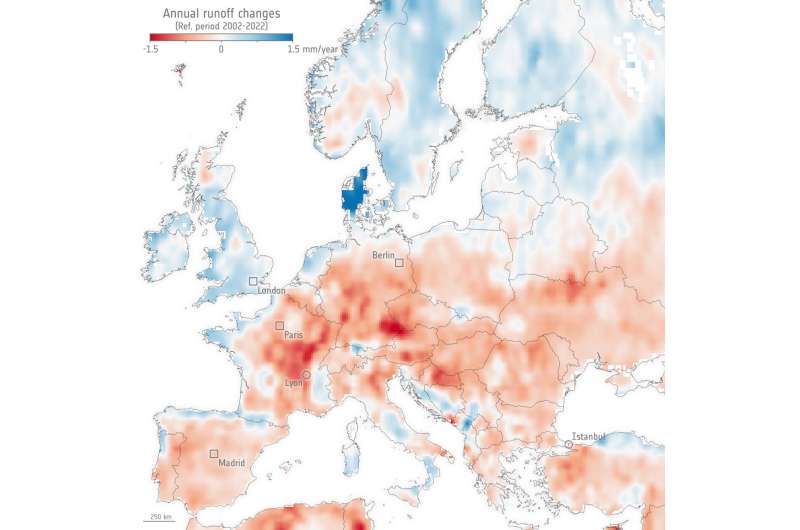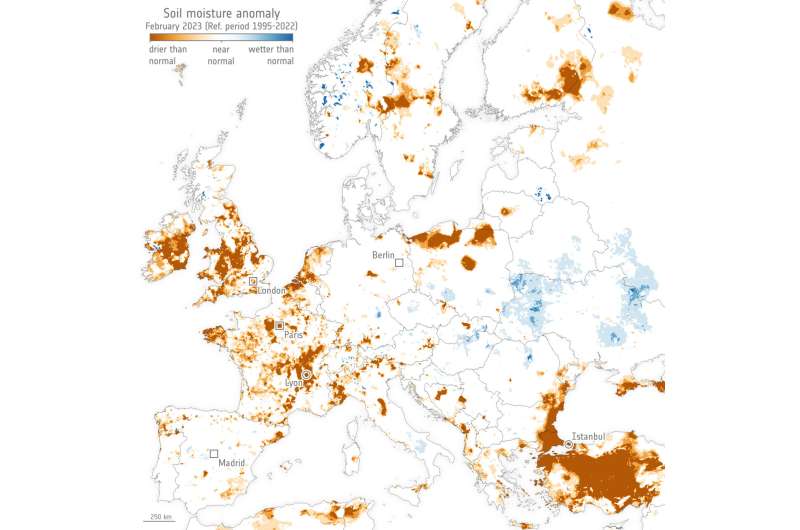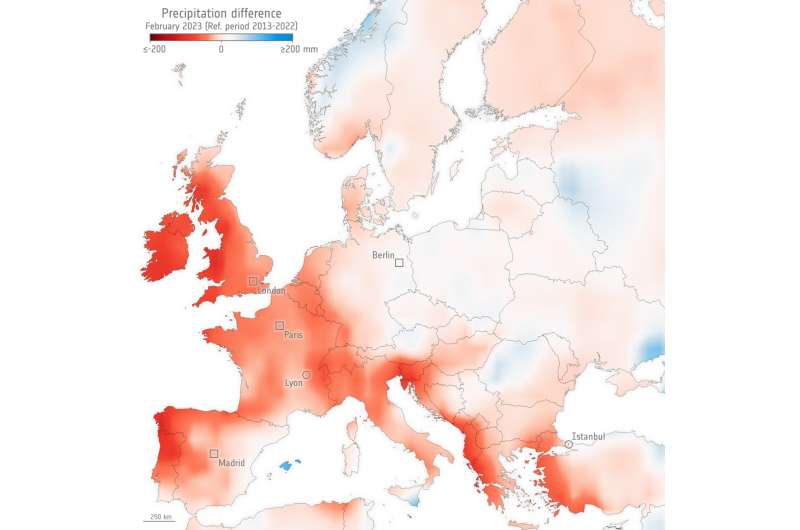This article has been reviewed according to Science X's editorial process and policies. Editors have highlighted the following attributes while ensuring the content's credibility:
fact-checked
trusted source
proofread
Hotter weather not diminishing runoff and river discharge as expected

Runoff and river discharge are important components in Earth's water cycle, but as climate change tightens its grip, heatwaves and instances of drought are increasingly hitting the headlines. One would assume that this hotter weather leads to reduced water runoff, but an innovative way of using information from satellites suggests that this isn't always the case.
Runoff occurs when there is precipitation, but the soil is saturated and has lost its capacity to soak up any more water. The water is then forced to flow over land or through channels until it reaches a stream or a river. Rivers and lakes are a result of runoff.
River discharge, on the other hand, describes the volume of water flowing per second at a given point along a river.
Runoff and river discharge are both important variables in the water cycle. However, climate change is affecting the cycle's delicate balance, including rates of runoff and river discharge.
In fact, reflecting the importance of river discharge as an indicator of climate change, is in the list of essential climate variables, and one that can be derived from satellite data. River discharge is also the subject of a precursor project as part of ESA's Climate Change Initiative.
As well as runoff and river discharge being variables in the water cycle, on a practical level, forecasting and monitoring water resources is essential for effective water management and for mitigating water-related disasters such as drought and flooding.
However, reliable forecasts rely on systems that are based on accurate and readily available observations, such as data from satellites.
River discharge is typically obtained by using hydrological or land-surface models, which require accurate observations of precipitation and evaporation. But these models may need approximations that can introduce uncertainties into model predictions.
Hydrologists are always looking for ways of reducing uncertainties so as to improve runoff and river discharge predictions.

ESA's Stream, Ridesat and the merged Streamride projects are helping to address this issue.
Through these ESA projects, the Hydrology Group of the Italian National Research Council has developed an innovative approach using satellite observations of terrestrial water storage, soil moisture and precipitation to predict runoff and river discharge—with the results published in the Geoscientific Model Development journal.
Stefania Camici of the National Research Council of Italy, said, "Our Stream approach is innovative because it takes advantage of the new possibilities offered by satellite observations."
Their research included using soil moisture data from ESA's Climate Change Initiative and total water storage data from NASA's Gravity Recovery and Climate Experiment, GRACE, mission.
Dr. Camici continued, "From space, we can obtain information on soil moisture content and terrestrial water storage that is not available from ground-based monitoring networks. By using these observations in a newly-designed hydrological model, we have been able to develop a robust and reliable system for predicting runoff and river discharge."
The model has already been applied to a number of large river basins, in different parts of the world and the first results are now available for Europe.
The large map above shows annual runoff trend over 20 years, between 2002 and 2022. This throws up some intriguing findings.
It is evident that runoff over central Europe—Germany, France, Austria, Czech Republic—is strongly decreasing, as one would expect given drought conditions over the last years. Runoff is also decreasing in parts of southern Europe, such as Spain and Greece.
On the other hand, runoff is increasing in Denmark and northern Europe.

But curiously, runoff is also increasing parts of southern Europe, including central Italy, Sardinia, Corsica and the in the Pyrenees.
Dr. Camici commented, "These results are somewhat in contrast to climate projections, where runoff is expected to decrease only over southern Europe. While these results need to be further validated and cross-checked, they open up interesting new activities for hydrological research in the near future."
ESA's Jérôme Benveniste noted, "This is actually the culmination of different research ideas originally submitted through our Science for Society program. We consolidated the different projects, resulting in them now being mature enough to extended to a global scale for long-term regional analysis of runoff trends.
"We can also monitor river discharge in quasi-near-realtime to use as input to hydrological and hydraulic models for flood prediction. This is particularly important for regions commonly affected by floods and in regions where floods can displace many people or result in waterborne diseases and food shortages, for example."
Looking to the future and the need to further our understanding of the water cycle, especially in light of the climate crisis, ESA is developing a new satellite mission called MAGIC—which stands for Mass change and Geosciences International Constellation.
By measuring Earth's gravity in detail, MAGIC promises to yield new information on the distribution and movement of water in oceans, on land, in ice sheets, glaciers and snow, and, uniquely among all space sensing technology, also underground.
Importantly, MAGIC will yield precise information about the exchange of water between oceans and land, which is relevant for a better understanding of the water cycle.
Also, MAGIC will tie in closely with a new essential climate variable: terrestrial water storage.
In addition, the Copernicus Sentinel-3 Next Generation Topography mission, which is under development, will also add to our understanding of the water cycle.
More information: Stefania Camici et al, Synergy between satellite observations of soil moisture and water storage anomalies for runoff estimation, Geoscientific Model Development (2022). DOI: 10.5194/gmd-15-6935-2022
Provided by European Space Agency





















